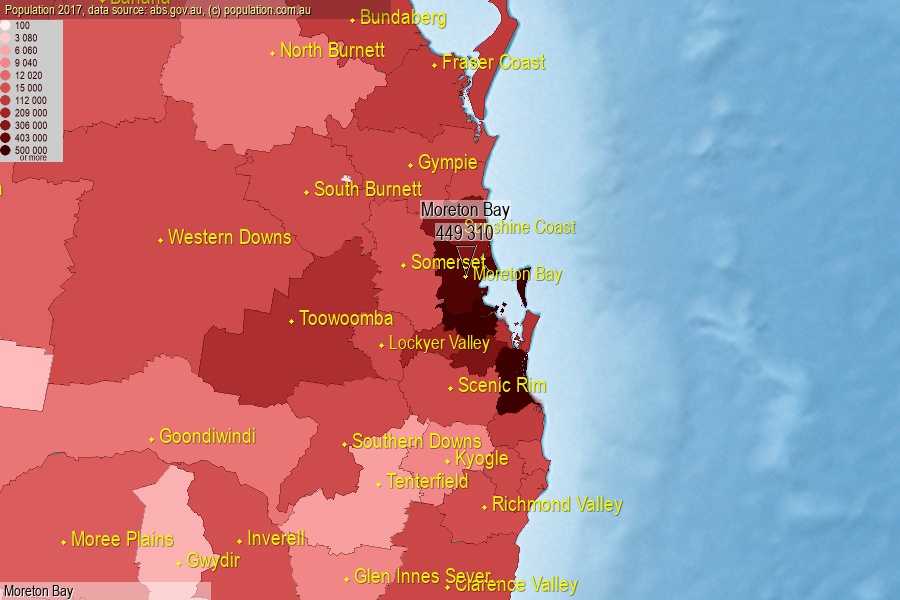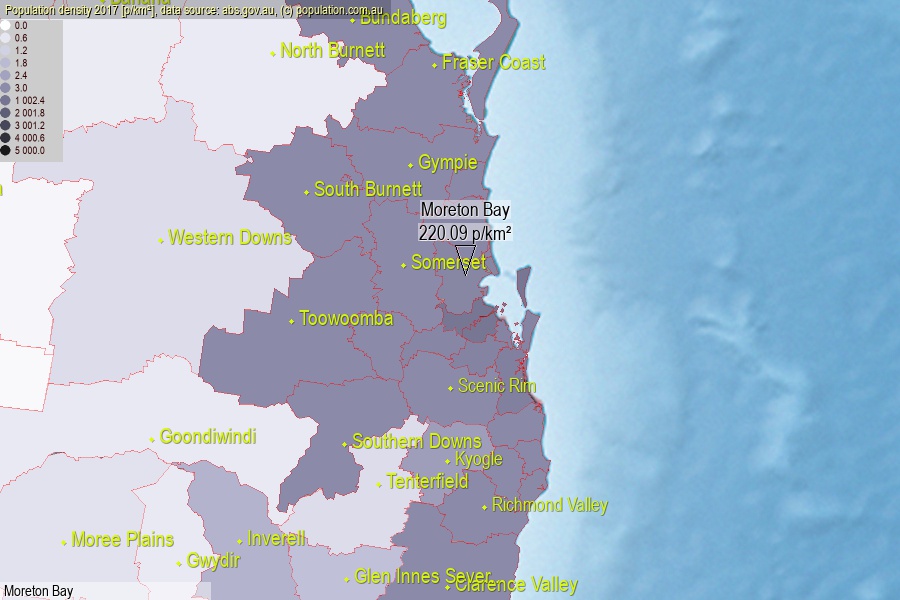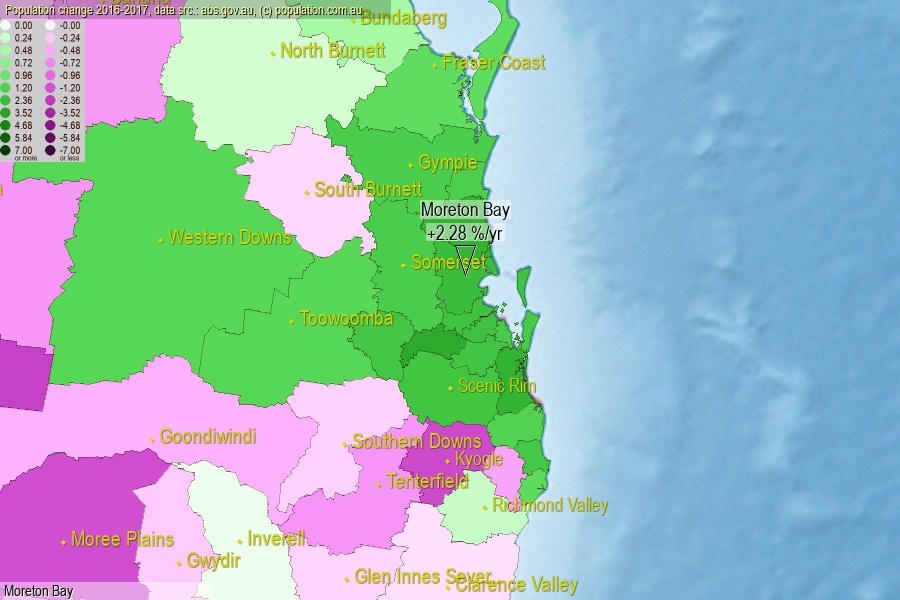 population.com.au
population.com.auLast official estimated population of Moreton Bay Regional Council (as Local Government Area) was 449 310 people (on 2017-06-30)[2]. This was 1.81% of total Australian population and 9.003% of QLD population. Area of Moreton Bay is 2 041.50 km², in this year population density was 220.09 p/km² . If population growth rate would be same as in period 2016-2017 (+2.28%/yr), Moreton Bay population in 2025 would be 538 131. [0]



Click to enlarge. Moreton Bay is located in the center of the images.
Population [people], population density [p./km²] and population change [%/year] [2]
[2001-2002] +3.00 %/Y
[2002-2003] +3.60 %/Y
[2003-2004] +3.60 %/Y
[2004-2005] +3.26 %/Y
[2005-2006] +2.67 %/Y
[2006-2007] +3.87 %/Y
[2007-2008] +3.76 %/Y
[2008-2009] +3.62 %/Y
[2009-2010] +2.95 %/Y
[2010-2011] +2.28 %/Y
[2011-2012] +2.86 %/Y
[2012-2013] +2.37 %/Y
[2013-2014] +2.21 %/Y
[2014-2015] +2.20 %/Y
[2015-2016] +2.40 %/Y
[2016-2017] +2.28 %/Y
[0] Calculated with linear interpolation from officially estimated population
[1] Read more about LGA and Australian Statistical Geography Standard (ASGS) on abs.gov.au
[2] Population data from Australian Bureau of Statistics (Population and density: 2017; change: 2016-2017)
[3] Digital Boundaries: Australian Statistical Geography Standard (ASGS) 2016.